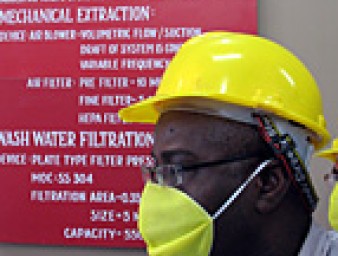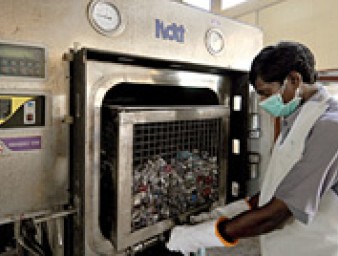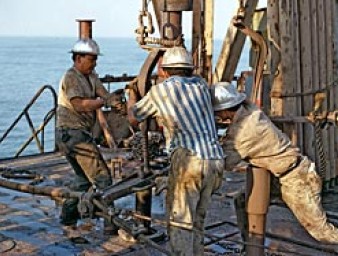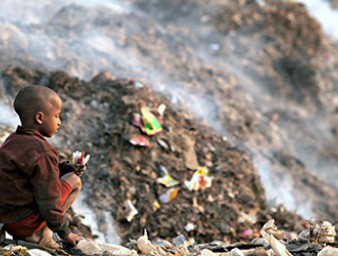Integrating a human rights approach in a toxic environment
01 November 2012

One of the world’s most dangerous extractive industries is mining. While hazardous substances and waste from mining inflict havoc on the environment, the human rights of those working in the mining industry and the people living nearby are also negatively impacted, says the Special Rapporteur on the implications for human rights of the environmentally sound management and disposal of hazardous substances and wastes.
“The unsound management of hazardous substances and waste from extractive industries contributes to overall environmental pollution which may have serious effects on the right to health and the right to life,” says former UN Special Rapporteur Calin Georgescu, in his final report that was presented at the 21st Session of the Human Rights Council in Geneva.
The way in which private industries have managed hazardous substances and waste is impacting on the right to health. For example, communities and those who live closest to areas with coal production, says Georgescu, are in poorer health and at a higher risk of developing diseases —cardiopulmonary disease, chronic lung disease, hypertension and kidney disease—than those who don’t reside in these areas. People are exposed to these substances through inhalation (air pollution), ingestion (contaminated food) and physical contact (exposure at work).
According to Georgescu’s report, the second most likely cause of lung cancer in some countries after smoking is radon, an airborne radioactive substance that uranium miners are exposed to at high levels. There has also been a 12 percent increase in coal miners developing black lung disease and silicosis, both potentially fatal lung diseases. A recent study by the National Institute for Occupational Safety and Health and the National Cancer Institute of the United States of America, shows a direct link between diesel exhaust and lung cancer. Miners working underground, as Georgescu explains, are already exposed to over 100 times the background concentrations of diesel exhaust due to the use of underground diesel-fuelled equipment.
It is not just adults who are experiencing health issues. According to the International Labour Organization (ILO), one million children globally, some as young as three-years-old, are working in mining and quarrying. These children are potentially exposed daily to toxic waste such as cyanide, mercury, and lead. For example, the World Health Organization (WHO) has called mercury intoxication an epidemic among children working in gold mines, causing many physical side-effects, such as acrodymia, a disease characterized by red and painful extremities.
In his report, Georgescu proposed a series of recommendations to safeguard human rights for those affected including a comprehensive, legally-binding regime to ensure chemical safety throughout the lifecycle of all chemicals. The Special Rapporteur considers the development of a treaty on mercury particularly important.
Georgescu also recommends that States should, among other things, ensure that the benefits of extractive activities are equitably distributed among affected communities, provide greater incentives on green corporate social responsibility initiatives, and require that those causing pollution and environmental damage internalize the costs associated with remediation. Georgescu also provides a number of recommendations to companies and other private sector actors, including developing techniques to reduce the hazardous waste generated by the extractive industries and providing better access to information to the public.
On 1 November, Marc Pallemaerts from Belgium replaces Georgescu as UN Special Rapporteur on the implications for human rights of the environmentally sound management and disposal of hazardous substances and wastes.
1 November 2012

VIEW THIS PAGE IN:



